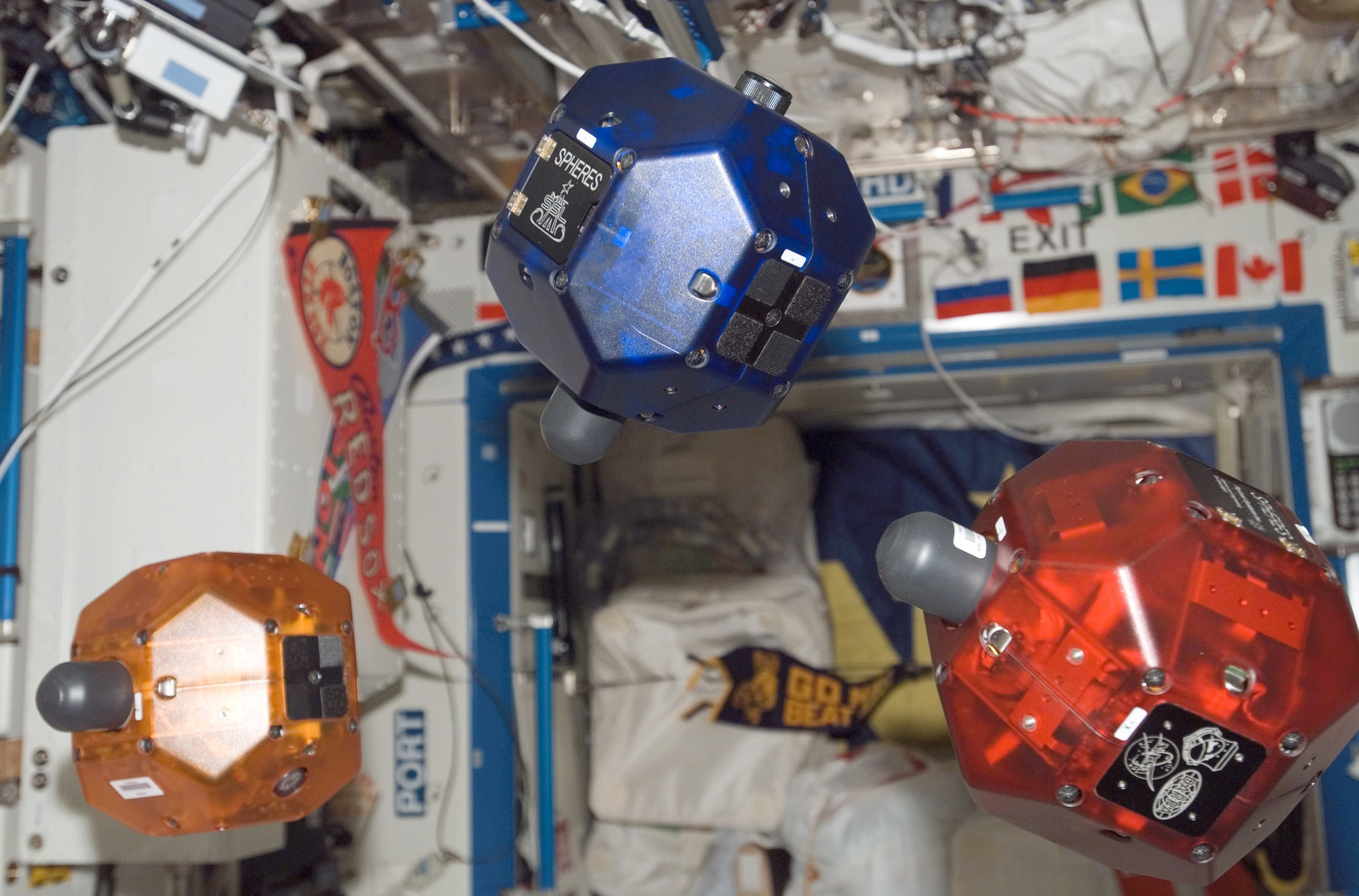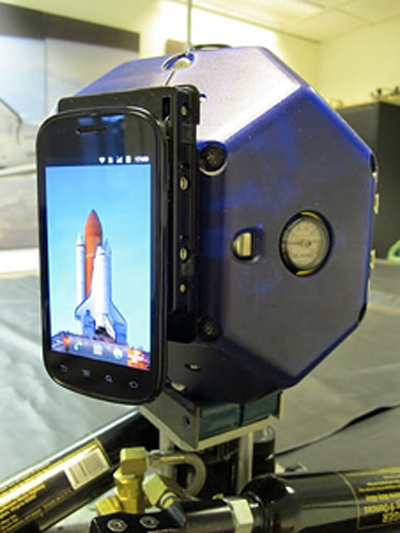Smartphone-Controlled Robots Aid Astronauts on Space Station

NASA's last space shuttle flight may have carried the first iPhone into space, but Android phones are doing the real work of assisting astronauts. The three volleyball-sized robots that help workers on the International Space Station have received an upgrade that links them to Android OS phones, allowing Mission Control to command the robots from the ground.
The smartphone-enhanced SPHERES robots would serve as extra eyes alongside the robotic hands of NASA's humanoid Robonaut 2. Together, they could do the work a space station crewmember, performing dull but necessary inventory or environmental surveys while humans focus on the more crucial tasks.
"That way, astronauts can spend more time performing science experiments and other work, instead of routine maintenance," said Terry Fong, director of the Intelligent Robotics Group at NASA's Ames Research Center, Moffett Field, Calif. "In the long run, free-flying robots like SPHERES could also be used to inspect the exterior of the space station or future deep-space vehicles." [Photos: Robonaut 2, Robot Butler for Astronauts]
The MIT-built robots will each connect with a Nexus S smartphone — the first commercial smartphone certified by NASA for use on the space shuttle and space station. The smartphone is loaded with Google's Android open-source platform that may even allow members of the public to make software for space experiments.

The smartphone upgrades for the SPHERES robots were delivered to the space station in July by NASA's shuttle Atlantis, which flew the final mission of the space shuttle program. The flight also carried two iPhone 4 phones in orbit for use by the space station crew.
"The availability of the Android source code allows us to customize the smartphone to be used as a compact, low-cost, low-power computer, rather than just as a phone," said Mark Micire, a software engineer in the NASA Ames Intelligent Robotics Group.
The enhanced SPHERES could also act like a remote-controlled video camera that can capture interviews with astronauts in the seemingly weightless environment of the space station. Future versions capable of operating in the vacuum of space might someday assist spacewalkers or perform visual surveys outside the space station.
Get the Space.com Newsletter
Breaking space news, the latest updates on rocket launches, skywatching events and more!
It's not a bad future for a robot that took inspiration from the remote droid which tested Luke Skywalker's lightsaber skills in the original "Star Wars."
"The space station is just the first step to using remotely controlled robots to support human exploration," said Chris Moore, program executive in the Exploration Systems Mission Directorate at NASA Headquarters in Washington.
This story was provided by InnovationNewsDaily, a sister site to SPACE.com. You can follow InnovationNewsDaily on Twitter @News_Innovation, or on Facebook.
Join our Space Forums to keep talking space on the latest missions, night sky and more! And if you have a news tip, correction or comment, let us know at: community@space.com.

Space.com is the premier source of space exploration, innovation and astronomy news, chronicling (and celebrating) humanity's ongoing expansion across the final frontier. Originally founded in 1999, Space.com is, and always has been, the passion of writers and editors who are space fans and also trained journalists. Our current news team consists of Editor-in-Chief Tariq Malik; Editor Hanneke Weitering, Senior Space Writer Mike Wall; Senior Writer Meghan Bartels; Senior Writer Chelsea Gohd, Senior Writer Tereza Pultarova and Staff Writer Alexander Cox, focusing on e-commerce. Senior Producer Steve Spaleta oversees our space videos, with Diana Whitcroft as our Social Media Editor.










